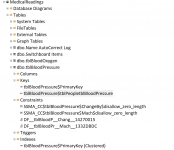Check for HIDDEN Indexes on Foreign Keys in Access on the NW tables and look at the corresponding tables in SQL Server. In my tests over the weekend, SSMA does a good job of any index you can see in the interface in the Index Property Sheet. It did not create the hidden index on a foreign key field, which Pat posted a screenshot of in her post. If I added a second manual index on the Foreign Key field in Access, that one did get migrated. Still SQL Server ended up with only that one, not the hidden one.
Because SQL Server does not automatically create indexes for Foreign Key fields, this behavior could be seen as internally consistent. And creating it in SQL Server is a simple script, so it's not a deal breaker in and of itself. The problem is that someone could migrate the accdb, not realizing this behavior exists, and fail to even LOOK for "missing" indexes after the migration.
The truth is that I had never noticed this and was, regrettably, skeptical until I was compelled to go beyond the surface.
I can see exposing the existence of the hidden Access instances and making it optional to give the user the chance to decide which behavior they want.

